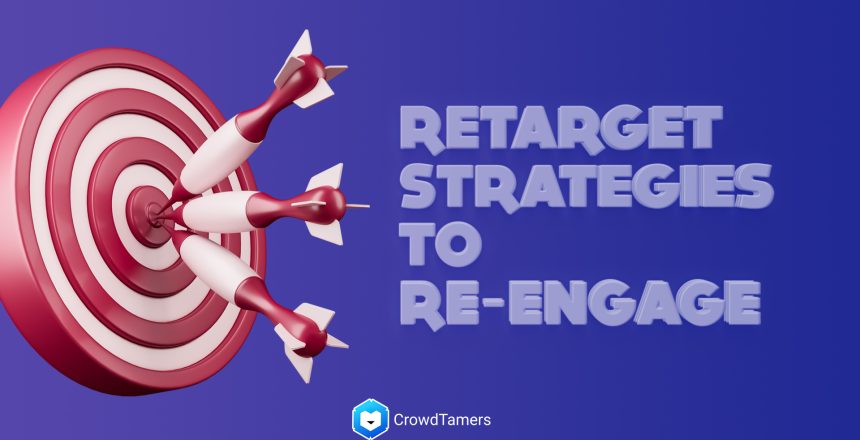Facebook Ad Retargeting allows you to target users who have previously interacted with your brand, whether by visiting your website, engaging with your Facebook page, or using your mobile app. You can increase the likelihood of converting them into paying customers by focusing your advertising efforts on these warm leads.
By using strategies like Custom Audiences, Dynamic Product Ads, audience segmentation, engaging ad creative, and ongoing optimization, you can create retargeting campaigns that drive conversions and boost your ROI.
In this blog post, we’ll explore the strategies and best practices that can help you re-engage interested users and take your Facebook Marketing to the next level.
What is Facebook Ad Retargeting?
Facebook Ad Retargeting is a powerful marketing technique that allows you to reach out to people who have previously interacted with your brand, website, or Facebook page. By targeting users who have already shown interest in your products or services, you can increase the likelihood of converting them into customers.
Retargeting works by placing a pixel or a piece of code on your website that tracks visitor behavior. When someone visits your site, the pixel drops a cookie in their browser, allowing you to target them with specific ads on Facebook later on.
Why is Facebook Ad Retargeting Important?
Studies have shown that only 2% of website visitors convert on their first visit. This means that 98% of your potential customers leave without making a purchase. Retargeting allows you to reach out to this 98%, giving them a gentle reminder of your brand and encouraging them to return and complete their purchase.
According to a study by AdRoll, retargeting can boost ad response rates by up to 400%. This is because retargeted ads are served to people who have already expressed interest in your brand, making them more likely to engage with your ads and ultimately make a purchase.
Facebook Ad Retargeting Strategies
1. Use Custom Audiences
Custom Audiences are a powerful tool for retargeting on Facebook. They allow you to target people who have already interacted with your brand, such as those who have visited your website, engaged with your Facebook page, or used your mobile app.
For example, the clothing retailer ASOS used Custom Audiences to retarget users who had previously visited their website but hadn’t made a purchase. By serving these users with personalized ads featuring the products they had viewed, ASOS was able to increase its conversion rate by 8.6%.
2. Create Dynamic Product Ads
Dynamic Product Ads (DPAs) are a type of retargeting ad that automatically promotes products to people who have previously viewed them on your website. DPAs use a product feed to showcase specific products to users based on their browsing behavior.
A great example of DPAs in action is the furniture retailer Wayfair. By using DPAs to retarget users with the exact products they had viewed on the Wayfair website, the company was able to increase its click-through rate by 88% and lower its cost per acquisition by 20%.
3. Segment Your Audience
Segmenting your audience allows you to create more targeted and personalized retargeting campaigns. By dividing your audience into specific groups based on their behavior or demographics, you can serve them with ads that are more relevant to their interests.
For instance, the beauty brand Sephora segments its retargeting audiences based on the categories of products they have viewed on the website, such as makeup, skincare, or haircare. This allows Sephora to serve users with ads featuring products from the categories they are most interested in, resulting in higher engagement and conversion rates.
4. Use Engaging Ad Copy and Visuals
The success of your retargeting campaigns depends largely on the quality of your ad copy and visuals. Your ads should be eye-catching, relevant, and compelling enough to encourage users to click through and take action.
The travel company Airbnb is known for its engaging retargeting ads. The company uses stunning visuals of its rental properties and destinations, paired with compelling ad copy that highlights the unique experiences travelers can have by booking through Airbnb. By creating ads that are both visually appealing and emotionally resonant, Airbnb is able to effectively re-engage users who have previously shown interest in its services.
5. Test and Optimize Your Campaigns
As with any marketing strategy, testing and optimization are crucial for the success of your Facebook Ad Retargeting campaigns. By continuously monitoring your ad performance and making data-driven optimizations, you can improve your results over time.
For example, the e-commerce company Shopify regularly tests different ad formats, visuals, and copy to determine which combinations are most effective for retargeting its audience. By using A/B testing to compare the performance of different ad variations, Shopify is able to continually refine its retargeting strategy and drive better results.



